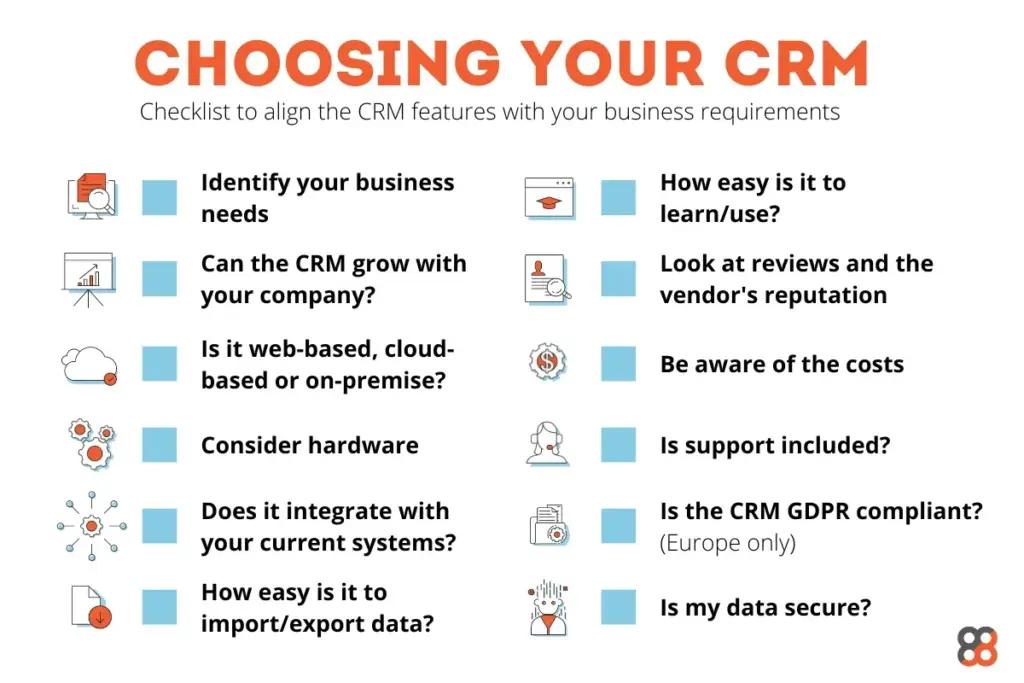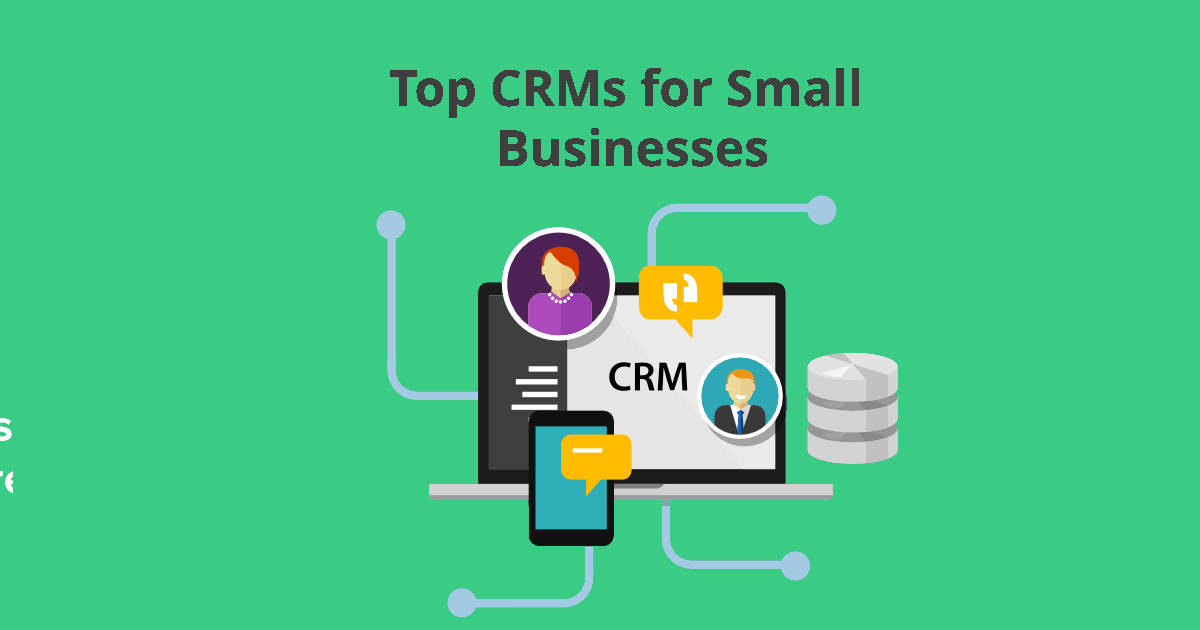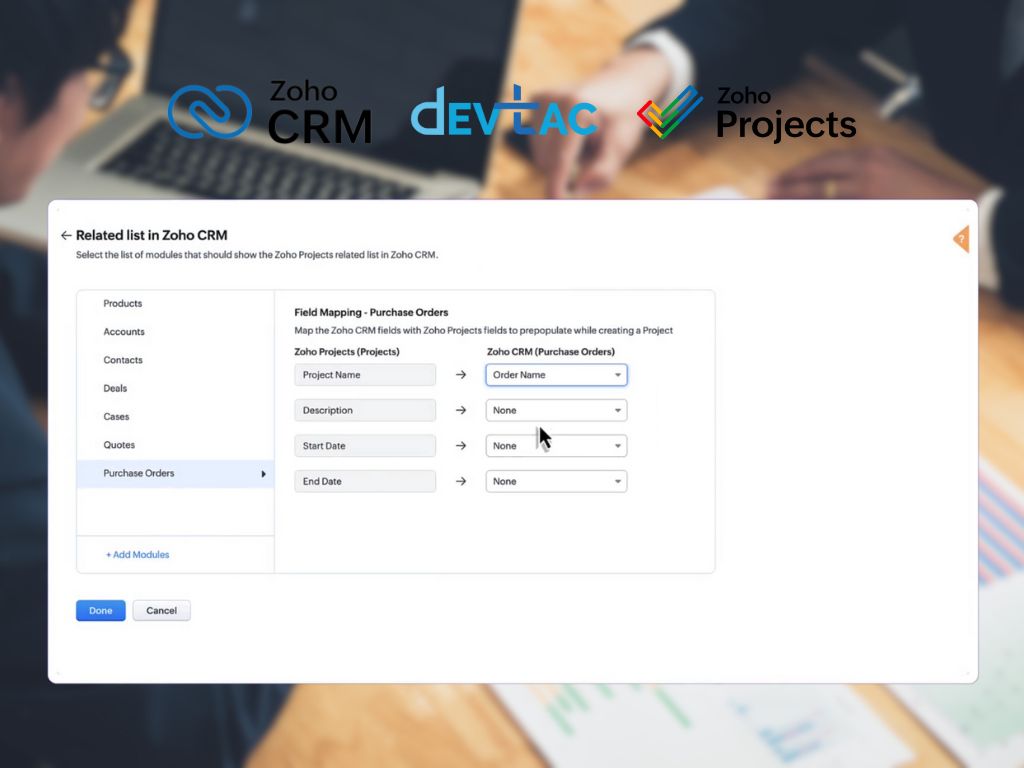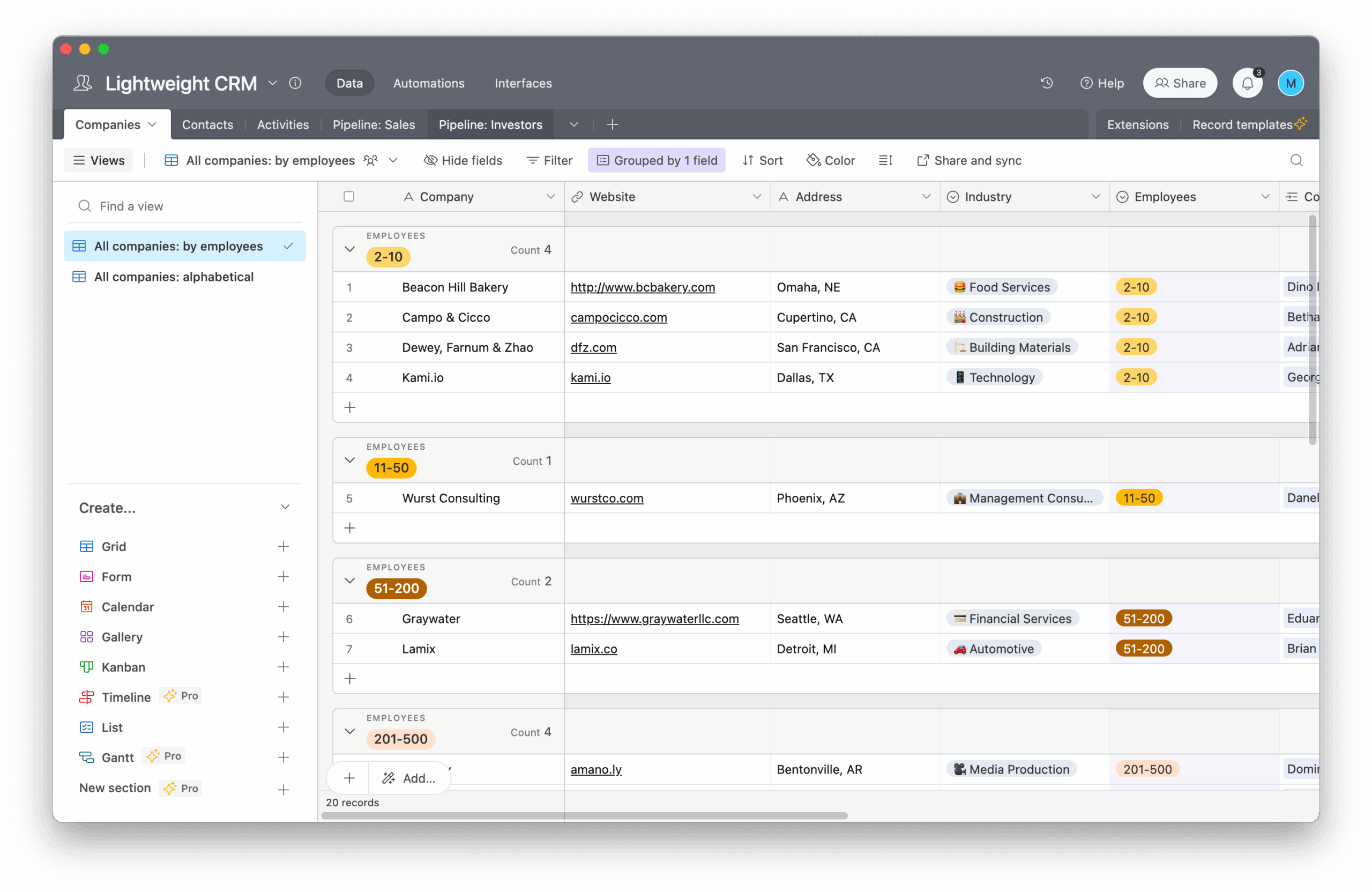
The Ultimate Small Business CRM Checklist for 2025: Your Roadmap to Customer Success
Running a small business is a rollercoaster. One minute you’re celebrating a new client, the next you’re scrambling to keep up with a mountain of tasks. In the midst of all this, keeping track of your customers can feel like trying to herd cats. That’s where a Customer Relationship Management (CRM) system comes in – your secret weapon for staying organized, nurturing leads, and turning customers into loyal advocates. But choosing and implementing a CRM can feel overwhelming. That’s why we’ve created this comprehensive checklist, your guide to navigating the CRM landscape and setting your small business up for success in 2025 and beyond.
This checklist isn’t just a list of features; it’s a strategic framework. It’s about understanding your business needs, selecting the right CRM solution, and implementing it effectively. We’ll cover everything from defining your goals to training your team, ensuring you get the most out of your investment. Let’s dive in!
Phase 1: Defining Your CRM Needs and Goals
Before you even start looking at CRM software, you need to understand *why* you need one. What are your pain points? What do you hope to achieve? This initial phase is crucial for a successful CRM implementation.
1. Identify Your Business Objectives
What are you trying to accomplish? Are you looking to increase sales, improve customer retention, streamline marketing efforts, or enhance customer service? Be specific. For example, instead of saying “increase sales,” aim for “increase sales by 15% in the next quarter.” Having clear objectives will guide your CRM selection and implementation.
- Sales Growth: Define specific sales targets, such as increasing the number of leads generated or converting more leads into customers.
- Customer Retention: Set goals for reducing customer churn and increasing customer lifetime value.
- Marketing Efficiency: Aim to improve the effectiveness of marketing campaigns and track ROI.
- Customer Service Improvement: Focus on reducing response times and improving customer satisfaction scores.
2. Analyze Your Current Customer Interactions
How do you currently interact with your customers? Do you use spreadsheets, email, or other tools? Map out your customer journey – from initial contact to post-sale support. This analysis will help you identify gaps and areas for improvement.
- Lead Generation: How do you attract new leads? What channels do you use (website, social media, referrals)?
- Sales Process: What steps do you take to convert leads into customers?
- Customer Service: How do you handle customer inquiries and support requests?
- Communication Channels: Identify all the ways you communicate with customers (email, phone, chat, social media).
3. Define Your CRM Requirements
Based on your objectives and current interactions, create a list of essential CRM features and functionalities. Think about what your team needs to be successful.
- Contact Management: The ability to store and organize customer information (names, contact details, purchase history, interactions).
- Lead Management: Tools to track leads, nurture them through the sales pipeline, and assign them to sales representatives.
- Sales Automation: Features to automate repetitive sales tasks, such as sending follow-up emails and scheduling appointments.
- Marketing Automation: Capabilities for creating and managing marketing campaigns, such as email marketing and social media integration.
- Reporting and Analytics: Tools to track key performance indicators (KPIs) and generate reports on sales, marketing, and customer service performance.
- Integration: The ability to integrate with other business tools, such as email, accounting software, and e-commerce platforms.
- Mobile Access: The ability to access the CRM from mobile devices.
4. Assess Your Budget and Resources
How much can you afford to spend on a CRM system? Consider not only the software cost but also the implementation, training, and ongoing maintenance expenses. Also, evaluate your internal resources – do you have the IT expertise to implement and manage the CRM, or will you need external help?
- Software Cost: Research different pricing models (monthly, annual, per user).
- Implementation Cost: Factor in the cost of data migration, customization, and integration.
- Training Cost: Budget for training your team on how to use the CRM.
- Ongoing Maintenance: Consider the cost of technical support and software updates.
- Internal Resources: Assess your team’s technical skills and availability.
Phase 2: Researching and Selecting the Right CRM
Now that you know what you need, it’s time to find the right CRM solution. This phase involves researching different options, comparing features, and evaluating vendors.
5. Research CRM Software Options
There are countless CRM systems available, from simple, affordable solutions to complex, enterprise-level platforms. Start by researching popular options and reading reviews.
- Popular CRM Systems: Research leading CRM providers like Salesforce, HubSpot, Zoho CRM, Pipedrive, and Freshsales.
- Read Reviews: Check online reviews and testimonials from other small businesses.
- Compare Features: Create a spreadsheet to compare the features of different CRM systems.
- Consider Industry-Specific Solutions: Some CRMs are designed for specific industries (e.g., real estate, healthcare).
6. Evaluate CRM Features and Functionality
Go back to your list of CRM requirements and evaluate each potential system against those needs. Prioritize features that are essential for your business.
- Contact Management: Does the CRM provide robust contact management features, including the ability to segment contacts and track interactions?
- Lead Management: Does the CRM offer lead scoring, lead nurturing, and pipeline management capabilities?
- Sales Automation: Does the CRM automate sales tasks, such as email follow-ups and appointment scheduling?
- Marketing Automation: Does the CRM integrate with your marketing tools and provide email marketing and campaign management features?
- Reporting and Analytics: Does the CRM offer comprehensive reporting and analytics capabilities?
- Integration: Does the CRM integrate with your other business tools?
- Mobile Access: Does the CRM offer mobile access for your team?
- Customization: Can the CRM be customized to meet your specific needs?
7. Consider Ease of Use and User Experience
A CRM system is only effective if your team actually uses it. Choose a system that is easy to use and has a user-friendly interface. Consider the learning curve and the amount of training required.
- User Interface: Is the interface intuitive and easy to navigate?
- Ease of Use: Is the system easy to learn and use?
- Training Requirements: How much training will your team need?
- Customer Support: Does the vendor offer good customer support?
8. Evaluate Pricing and Licensing
CRM systems have different pricing models. Choose a plan that fits your budget and your business needs. Pay attention to the pricing structure and any hidden fees.
- Pricing Models: Research different pricing models (monthly, annual, per user).
- Hidden Fees: Be aware of any hidden fees, such as setup fees or data storage fees.
- Scalability: Can the CRM scale as your business grows?
9. Request Demos and Trials
Before making a decision, request demos from your top CRM choices. This will give you a firsthand look at the system’s features and functionality. Take advantage of free trials to test the system with your own data.
- Request Demos: Schedule demos with each vendor to see the system in action.
- Free Trials: Sign up for free trials to test the system with your own data.
- Ask Questions: Prepare a list of questions to ask during the demos.
- Involve Your Team: Have your team members participate in the demos and trials.
10. Make Your Decision
After evaluating all the options, it’s time to make a decision. Choose the CRM system that best meets your needs, budget, and technical capabilities. Don’t rush this step; take your time and make an informed decision.
Phase 3: Implementing Your CRM System
Once you’ve chosen your CRM, the real work begins: implementation. This phase involves setting up the system, migrating your data, and training your team.
11. Plan Your Implementation
Create a detailed implementation plan that outlines the steps involved, the timeline, and the responsibilities of each team member. This plan will help you stay organized and on track.
- Define the Scope: Determine the scope of your implementation project.
- Create a Timeline: Set realistic deadlines for each step of the implementation.
- Assign Responsibilities: Assign responsibilities to each team member.
- Identify Key Stakeholders: Identify the key stakeholders involved in the implementation.
12. Prepare Your Data
Before migrating your data, clean it up and organize it. This will ensure that your data is accurate and consistent in the new CRM system. This is a critical step – garbage in, garbage out!
- Data Cleaning: Remove duplicate contacts and outdated information.
- Data Formatting: Standardize your data format.
- Data Backup: Back up your data before migrating it.
- Data Mapping: Map your existing data fields to the corresponding fields in the new CRM.
13. Migrate Your Data
Migrate your data from your old system (e.g., spreadsheets) to the new CRM. The CRM vendor or a third-party consultant may be able to assist with this process.
- Data Import: Import your data into the new CRM system.
- Data Validation: Validate your data after importing it.
- Data Testing: Test the data to make sure it’s accurate.
14. Customize Your CRM
Customize the CRM to meet your specific needs. This may involve configuring the system settings, creating custom fields, and integrating with other tools.
- Configure Settings: Configure the system settings to match your business processes.
- Create Custom Fields: Create custom fields to store specific data.
- Integrate with Other Tools: Integrate the CRM with your other business tools.
- Workflow Automation: Set up workflow automation to streamline your processes.
15. Train Your Team
Provide comprehensive training to your team on how to use the CRM system. This is essential for ensuring user adoption and maximizing the system’s benefits.
- Training Materials: Create training materials, such as user manuals and video tutorials.
- Training Sessions: Conduct training sessions for your team.
- Hands-on Practice: Provide hands-on practice for your team.
- Ongoing Support: Provide ongoing support and assistance to your team.
16. Test and Refine
Before fully launching the CRM, test it thoroughly. Identify any issues and make adjustments as needed. Get feedback from your team and refine the system based on their input.
- Testing: Test the system thoroughly to ensure it functions as expected.
- User Feedback: Gather feedback from your team.
- Refinement: Refine the system based on feedback and testing results.
Phase 4: Optimizing and Maintaining Your CRM
Implementing a CRM is not a one-time event; it’s an ongoing process. This phase involves monitoring performance, making improvements, and ensuring that the system continues to meet your needs.
17. Monitor Key Performance Indicators (KPIs)
Track key performance indicators (KPIs) to measure the effectiveness of your CRM system. This will help you identify areas for improvement.
- Sales KPIs: Track sales revenue, lead conversion rates, and average deal size.
- Marketing KPIs: Track website traffic, lead generation, and marketing ROI.
- Customer Service KPIs: Track customer satisfaction scores, response times, and resolution times.
18. Analyze Data and Generate Reports
Regularly analyze your CRM data and generate reports to gain insights into your business performance. Use these insights to make data-driven decisions.
- Analyze Sales Data: Identify top-performing products and sales representatives.
- Analyze Marketing Data: Track the performance of your marketing campaigns.
- Analyze Customer Service Data: Identify areas for improvement in customer service.
19. Regularly Review and Update Your CRM
Regularly review your CRM system to ensure that it continues to meet your needs. Make updates and improvements as needed. Business needs evolve, and so should your CRM.
- Review Your Goals: Review your business goals and objectives.
- Evaluate Your CRM: Evaluate the performance of your CRM system.
- Make Updates: Make updates and improvements to your CRM system.
- Add New Features: Add new features as needed.
20. Provide Ongoing Training and Support
Provide ongoing training and support to your team. This will help them stay up-to-date on the latest features and functionalities. Keep your team engaged and enthusiastic about using the CRM.
- Refresher Training: Provide refresher training sessions.
- New Feature Training: Train your team on new features and functionalities.
- Technical Support: Provide technical support to your team.
- User Feedback: Gather feedback from your team.
21. Integrate with Emerging Technologies
Stay ahead of the curve by integrating your CRM with emerging technologies, such as artificial intelligence (AI) and machine learning (ML). These technologies can automate tasks, personalize customer interactions, and provide valuable insights.
- AI-Powered Chatbots: Integrate AI-powered chatbots to provide instant customer support.
- Predictive Analytics: Use predictive analytics to identify potential leads and predict customer behavior.
- Personalized Recommendations: Provide personalized product recommendations to customers.
- Voice Integration: Explore voice integration for hands-free CRM access.
22. Ensure Data Security and Compliance
Protect your customer data by implementing robust security measures and complying with relevant data privacy regulations, such as GDPR and CCPA. This is paramount for building trust and maintaining a good reputation.
- Data Encryption: Encrypt your customer data to protect it from unauthorized access.
- Access Controls: Implement access controls to restrict access to sensitive data.
- Regular Backups: Back up your data regularly.
- Compliance with Regulations: Comply with data privacy regulations, such as GDPR and CCPA.
23. Foster a CRM-Focused Culture
Encourage your team to embrace the CRM system and use it as a central hub for all customer-related activities. A CRM-focused culture will improve collaboration, communication, and customer satisfaction.
- Lead by Example: Leadership should actively use the CRM and encourage its use throughout the team.
- Communication: Communicate the benefits of the CRM to your team.
- Collaboration: Encourage collaboration among team members.
- Recognition: Recognize and reward team members who effectively use the CRM.
24. Seek Expert Advice When Needed
Don’t hesitate to seek expert advice from CRM consultants or vendors. They can provide valuable guidance and support throughout the implementation and optimization process. There’s no shame in getting help; it can save you time and money in the long run.
- CRM Consultants: Hire a CRM consultant to help with the implementation and optimization process.
- Vendor Support: Utilize the support resources provided by your CRM vendor.
- Industry Experts: Consult with industry experts.
25. Embrace Continuous Improvement
The CRM journey is never truly finished. Continuously monitor, evaluate, and refine your CRM strategy to ensure it aligns with your evolving business needs. Be adaptable and embrace the ongoing process of improvement.
- Regular Audits: Conduct regular audits of your CRM system.
- Performance Reviews: Review the performance of your CRM system on a regular basis.
- Adaptability: Be prepared to adapt your CRM strategy as your business needs change.
- Feedback Loops: Establish feedback loops to gather input from your team and customers.
Conclusion: Your CRM Checklist for 2025 and Beyond
Implementing a CRM system is a significant undertaking, but the rewards – increased sales, improved customer retention, and streamlined operations – are well worth the effort. By following this checklist, you’ll be well on your way to selecting, implementing, and optimizing a CRM system that empowers your small business to thrive in 2025 and beyond. Remember, the key is to be proactive, adaptable, and committed to continuous improvement. Good luck, and happy CRM-ing!


